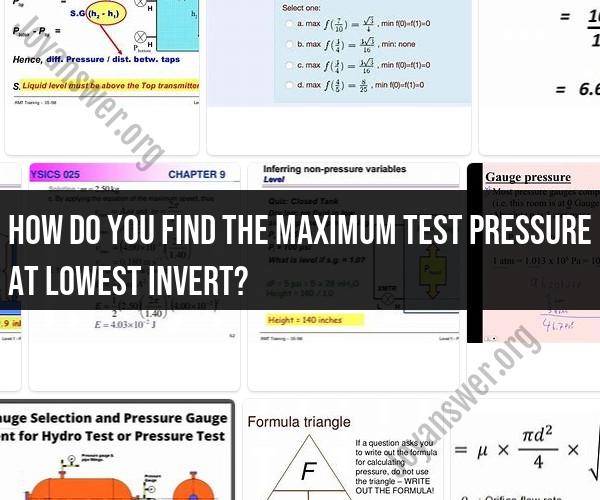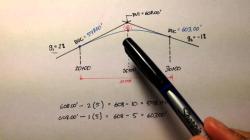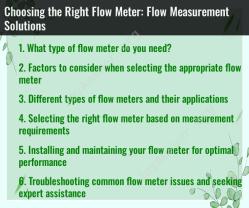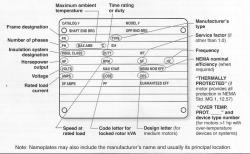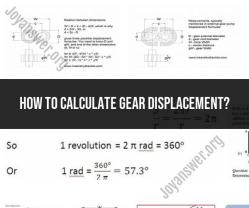How do you find the maximum test pressure at lowest invert?
Calculating the maximum test pressure at the lowest invert of a pipeline involves considering various factors to ensure the pipeline's structural integrity and safety during testing. Here's a guide on how to calculate the maximum test pressure at the lowest invert of a pipeline:
1. Identify the Lowest Invert:
- The lowest invert is the lowest point along the pipeline, typically at the lowest elevation. This is where the test pressure will have the most significant impact.
2. Determine the Design Pressure:
- The design pressure is the intended operating pressure of the pipeline. It is usually specified by engineering standards and regulations.
3. Consider Safety Factors:
- Safety factors should be applied to the design pressure to ensure the pipeline's integrity during testing. Common safety factors range from 1.25 to 1.5, depending on industry standards.
4. Calculate the Test Pressure:
- Use the following formula to calculate the maximum test pressure at the lowest invert:
5. Account for Hydrostatic Head:
- The hydrostatic head is the pressure exerted by the weight of the fluid in the pipeline. At the lowest invert, this pressure is at its highest. Calculate the hydrostatic head as:
6. Add Hydrostatic Head to Test Pressure:
- The hydrostatic head should be added to the calculated maximum test pressure to account for the additional pressure exerted by the fluid column.
7. Check against Allowable Stress:
- Compare the calculated maximum test pressure (including hydrostatic head) against the pipeline's allowable stress and material properties to ensure it remains within safe limits.
8. Verify Compliance with Regulations:
- Ensure that the calculated maximum test pressure complies with relevant industry regulations, codes, and standards governing pipeline testing.
9. Prepare for Pressure Testing:
- Once the maximum test pressure is calculated, prepare for the pressure testing process, including equipment setup, safety measures, and monitoring procedures.
10. Perform Pressure Test:- Conduct the pressure test at the calculated maximum test pressure while closely monitoring the pipeline and associated equipment.
11. Document and Report:- Document the test procedures, results, and any observations during the pressure test. Maintain accurate records for future reference and compliance.
It's important to note that pipeline pressure testing is a critical process that requires careful planning, expertise, and adherence to industry guidelines. Working with experienced professionals and engineers is essential to ensure the safety and integrity of the pipeline during testing and throughout its operational life.
